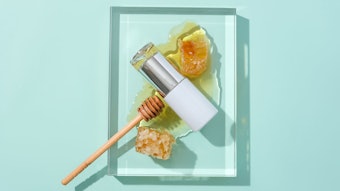See the complete article in our August 2013 archived digital edition.
When talking to consumers about their hair care wants and needs, it generally does not take long until the word “strength” is uttered. It is especially common to hear the desire for “strong, healthy hair,” which illustrates the inextricable link between these two attributes in the mind of consumers. This, of course, is recognized by marketers of hair care products, who accordingly desire to craft communication messages on product packaging and in advertisements that speak to an ability to improve hair strength. As a result, it becomes necessary to establish a means for measuring and quantifying the “strength” of hair.
To the scientist, this immediately conjures up an assortment of instrument-based mechanical testing approaches that can be used to probe the physical properties of individual fibers. A variety of methodologies can be (and have been) adopted, but it is important to recognize that the properties of hair are a function of its highly complex structure, and different techniques may specifically probe select regions of this remarkable substrate. Therefore, it is not uncommon for different measurement approaches to yield different outcomes.
With this said, it is also recognized that consumer assessment of their own hair strength likely does not involve tugging and manipulating individual fibers in a manner comparable to these laboratory methods. Instead, it would appear that consumer judgment is based on observing the number of broken strands in a brush or comb after grooming, by noticing the number of fibers on the shower floor after bathing, or simply by observing the presence of split ends when looking in the mirror. This highlights a common issue in in vitro testing, wherein there is the need to consider whether a measurement approach is intended to simulate real-life conditions or to provide a convenient means of technical characterization. Both of these approaches have merit and provide distinctly different useful information. By means of illustration, it will be shown that the tensile properties of hair can be compromised by certain treatments and conditions, but it will also be demonstrated that the best means of addressing this issue is not necessarily the obvious one.
This article is the first in a series that will address the approaches of measuring the “strength” of hair and quantifying the manner by which this property may be altered. Specifically, it will begin with the generation of stress-strain curves through the use of constant rate extension experiments. This is a useful fundamental approach, and yields a great deal of information about the physical structure of hair. In most instances, results from this methodology will suffice as a means of characterization; however, follow-up articles will build on this foundation and show how other methods probe different regions of the hair structure, which in turn may be affected differently by a given treatment. In addition, alternative approaches will also be discussed that appear to better simulate consumer-usage conditions. In all instances, attempts will be made to provide guidance in properly performing such experiments to allow production of quality data.
Before beginning, it is worth noting that the mechanical properties of hair are a direct reflection of its complex structure. These two topics should be discussed jointly, but the length of this article precludes the ability to fully describe this remarkable substrate. Instead, the reader is referred to additional reading that provides this background information.1










